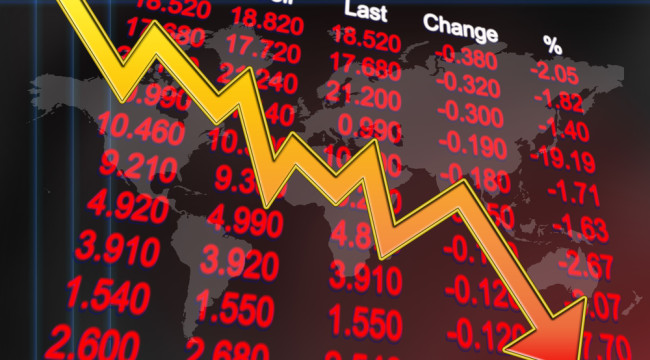We're Due for a Recession in 2014
The level of uncertainty among investors about the direction of U.S. fiscal and monetary policy is startling. At a recent gathering of top investors in New York, few displayed much conviction about the future path of the Federal Reserve’s monetary stance after its Sept. 18 decision not to wind down a slew of stimulus measures in the face of a weaker-than-expected U.S. economy. On the fiscal policy front, incessant congressional wrangling over federal spending and borrowing baffled financiers from around the world.
Fed Chairman Ben Bernanke has made no secret of his concerns about the negative effects of fiscal policy uncertainty. During his Sept. 18 press conference, he cited the economic drag tied to what has become a government shutdown-cum-possible debt crisis as a reason for the central bank’s move. More recently, in an Oct. 2 speech, he acknowledged, “Community bankers today confront a frustratingly slow recovery, stiff competition from larger banks and other financial institutions, and the responsibility of complying with new and existing regulations.”
Households and firms face more policy uncertainty today than at any time since the mid-2011 debt-ceiling fiasco that sent the S&P 500 swooning by 20 percent over a period of three weeks. Then as now, Congress dithered for weeks while threatening to shut down the government and/or default on Treasury debt. Lawmakers managed, even while eventually agreeing to a debt-ceiling increase, to engineer a ratings-agency downgrade of U.S. debt. It took the stock market almost 8 months to recover from that debacle.
Now, just over 2 years later, many households and businesses are gamely trying to look through the growing cloud of uncertainty that is enveloping Congress’s increasingly doubtful efforts to pass a “continuing resolution” to keep the government operating in the new fiscal year, and to raise the debt ceiling, enabling the government to finance its past spending. But even if Congress manages to pass temporary measures that allow continued spending and borrowing, the uncertainty won’t end. The measures under discussion over the next several weeks, if they are passed, will only postpone the wrangling until November or December.
The jump in uncertainty tied to the Fed’s Sept. 18 move could therefore not have come at a worse time. Bernanke’s hints in May about the possibility of a tightening had already inflicted a damaging full percentage-point rise in interest rates, lowering growth. Elevated uncertainty about monetary policy will remain a drag on the economy.
Now add to this the uncertainty over the debt ceiling, and you have a recipe for recession in 2014. Based on comparisons to the 2007-11 period, the combination of monetary and fiscal uncertainty could reduce investment and employment by enough to shave a full percentage point off growth this year — putting the economy at stall speed by January.
The spending cuts enacted this year, while reducing the deficit from about $1 trillion to $600 billion, have already shaved about 2 percentage points off GDP – and the current uncertainty isn’t helping. It’s nearly impossible to imagine Congress turning on a dime and promoting new stimulus spending. Nor does the Fed have any arrows left in its quiver: Having pushed its “quantitative easing” (QE) experiment nearly to the limit, the Fed could offer little in the way of new stimulus beyond further delaying tapering, as it did last month.
So what can be done? Congress needs to adopt quickly a budget for 2014 and raise the debt ceiling high enough to preclude further disruptions for at least a year and a half. Meanwhile, the Fed needs to stop trying to fine-tune its tapering message, end board members’ public second-guessing of its decisions, and declare its willingness to hold steady until the economy stabilizes. The more unlikely these steps become, the more likely a 2014 recession becomes.
The average postwar U.S. expansion has lasted 58 months. In the midst of major policy dislocation in Congress and at the Fed, we are at month 52 of the current expansion, which began in June 2009. But we are running out of time – and luck.
This originally appeared in Politico.
John H. Makin
Ed. Note: Like it or not, we’re stuck with the Fed. And while it continues to print money and keep interest rates artificially low — all while destroy the value of the U.S. dollar — you’ll want to make sure you’re taking action now to protect you and your family’s wealth. Signing up for free The Daily Reckoning email edition is one small thing you can do to make that happen. Every single issue is packed with opportunities to help you safeguard and even grow your wealth no matter what the Fed does. And it’s FREE! So what are you waiting for? Sign up right here to get started.



Comments: